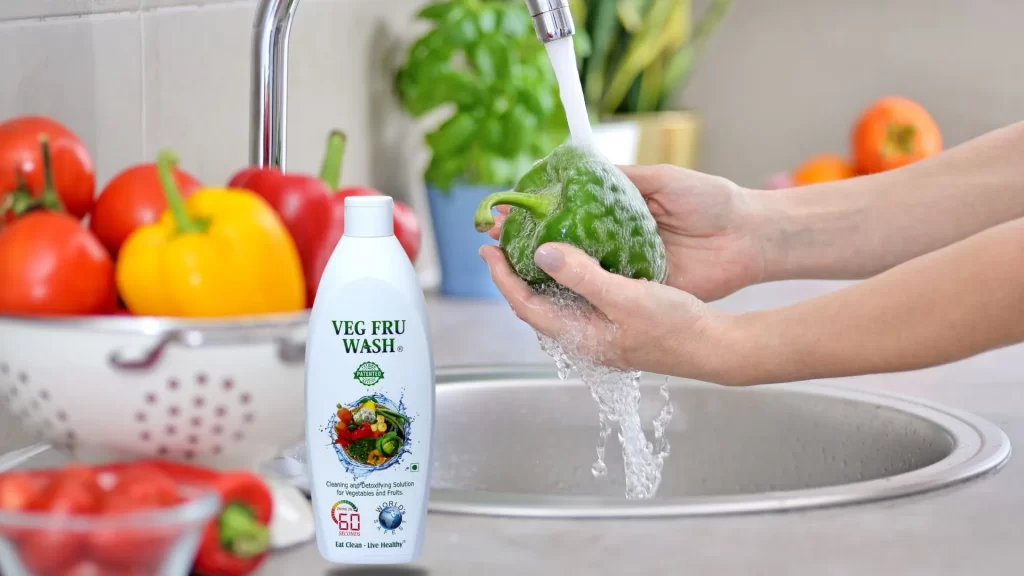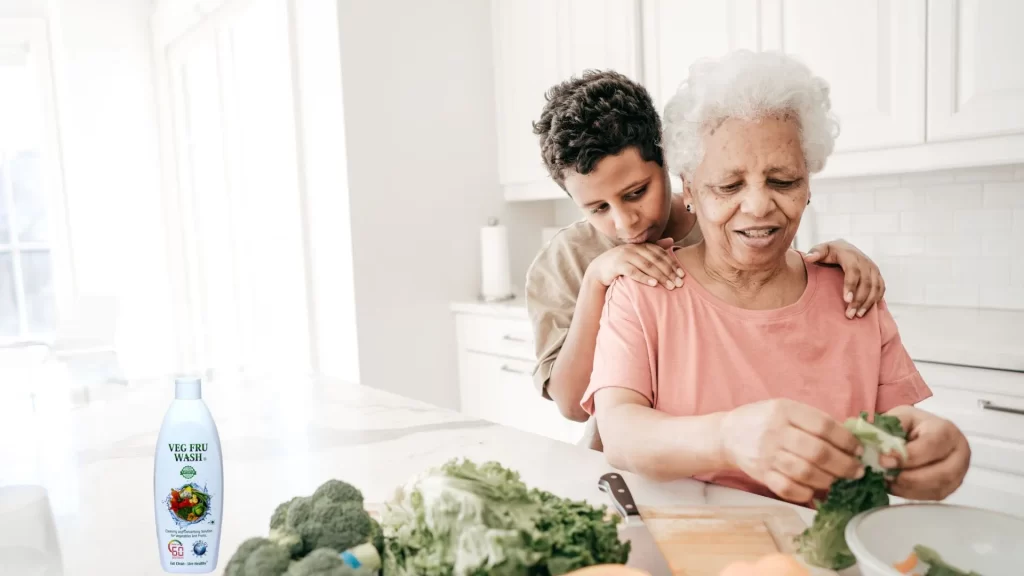
In an era where health and hygiene are more critical than ever, ensuring that the fruits and vegetables we consume are free from harmful substances is a top priority. While a simple rinse under water might seem sufficient, it often falls short of removing all contaminants. This blog delves into the best solutions to wash fruits and vegetables, highlighting the importance of thorough cleaning, and exploring various methods to ensure your produce is safe and clean.
Why Washing Fruits and Vegetables is Crucial
Fruits and vegetables are essential components of a healthy diet, providing vital nutrients, vitamins, and fiber. However, they can also carry unwanted substances, including:
- Pesticides: Used in conventional farming to protect crops, pesticide residues can linger on produce.
- Bacteria: Harmful bacteria such as E. coli and Salmonella can contaminate fruits and vegetables, posing serious health risks.
- Dirt and Debris: Produce can accumulate dirt, dust, and other debris during harvesting, transportation, and handling.
- Wax Coatings: Some fruits and vegetables are coated with wax to extend shelf life and improve appearance, which can trap contaminants.
Best Solutions to Wash Fruits and Vegetables
1. Water and Brushing
Method: Rinsing produce under running water and using a brush for items with tougher skins (e.g., melons, cucumbers, potatoes).
Pros:
- Easy and convenient.
- Removes dirt and some bacteria.
Cons:
- Not highly effective at removing pesticides and waxes.
Best For: Produce with thick skins that can withstand scrubbing.
2. Vinegar Solution
Method: Mix one part white vinegar with three parts water. Soak the produce for a few minutes, then rinse thoroughly with water.
Pros:
- Vinegar has antimicrobial properties.
- Helps remove bacteria and some pesticides.
Cons:
- Vinegar odor may linger.
- Not as effective on wax coatings.
Best For: Leafy greens, berries, and other delicate fruits and vegetables.
3. Baking Soda Solution
Method: Dissolve one teaspoon of baking soda in a large bowl of water. Soak the produce for a few minutes, then rinse well.
Pros:
- Effective at removing pesticide residues.
- Non-toxic and safe.
Cons:
- Requires thorough rinsing to avoid residue.
- Can be time-consuming.
Best For: Apples, grapes, and other fruits with smooth skins.
4. Salt Solution
Method: Combine one tablespoon of salt with a large bowl of water. Soak the produce for a few minutes, then rinse thoroughly.
Pros:
- Salt has natural antimicrobial properties.
- Helps remove some pesticides and bacteria.
Cons:
- May leave a salty residue if not rinsed well.
- Not as effective on waxes.
Best For: Leafy greens and root vegetables.
5. Commercial Fruit and Vegetable Washes
Method: Use a specialized fruit and vegetable wash like Veg Fru Wash. Follow the product’s instructions for dilution and soaking time.
Pros:
- Formulated specifically to remove pesticides, bacteria, and waxes.
- Non-toxic and food-safe.
- Convenient and easy to use.
Cons:
- Cost more than DIY solutions.
- Availability may vary.
Best For: All types of produce, especially those with high pesticide residues.
Choosing the Best Solution for Your Needs
When selecting the best solution to wash fruits and vegetables, consider the following factors:
- Type of Produce: Different fruits and vegetables may require different cleaning methods. For example, delicate berries need a gentle wash, while thicker-skinned produce can handle more rigorous cleaning.
- Level of Contamination: If you’re concerned about high levels of pesticides or bacteria, a commercial wash may be more effective.
- Convenience: Choose a method that fits your lifestyle and time constraints. DIY solutions like vinegar or baking soda are inexpensive but require preparation and thorough rinsing, while commercial washes offer convenience and comprehensive cleaning.
Additional Tips for Washing Fruits and Vegetables
- Wash Your Hands: Always wash your hands with soap and water before and after handling fresh produce to prevent cross-contamination.
- Clean Surfaces and Utensils: Ensure that cutting boards, knives, and countertops are clean to avoid transferring bacteria to your produce.
- Peeling and Trimming: For produce with inedible skins or peels, remove these after washing to further reduce contaminants.
- Avoid Soap and Detergent: Do not use regular soap or dish detergent, as they can leave harmful residues on your produce.
Conclusion
Ensuring that your fruits and vegetables are clean and safe to eat is a crucial step in maintaining a healthy diet. While simple rinsing with water can remove some dirt and bacteria, using more effective solutions such as vinegar, baking soda, salt, or commercial fruit and vegetable washes can provide greater peace of mind. Each method has its pros and cons, so choose the one that best suits your needs and the type of produce you’re cleaning. By incorporating thorough washing practices into your routine, you can enjoy the nutritional benefits of fresh produce while minimizing the risks associated with contaminants.


